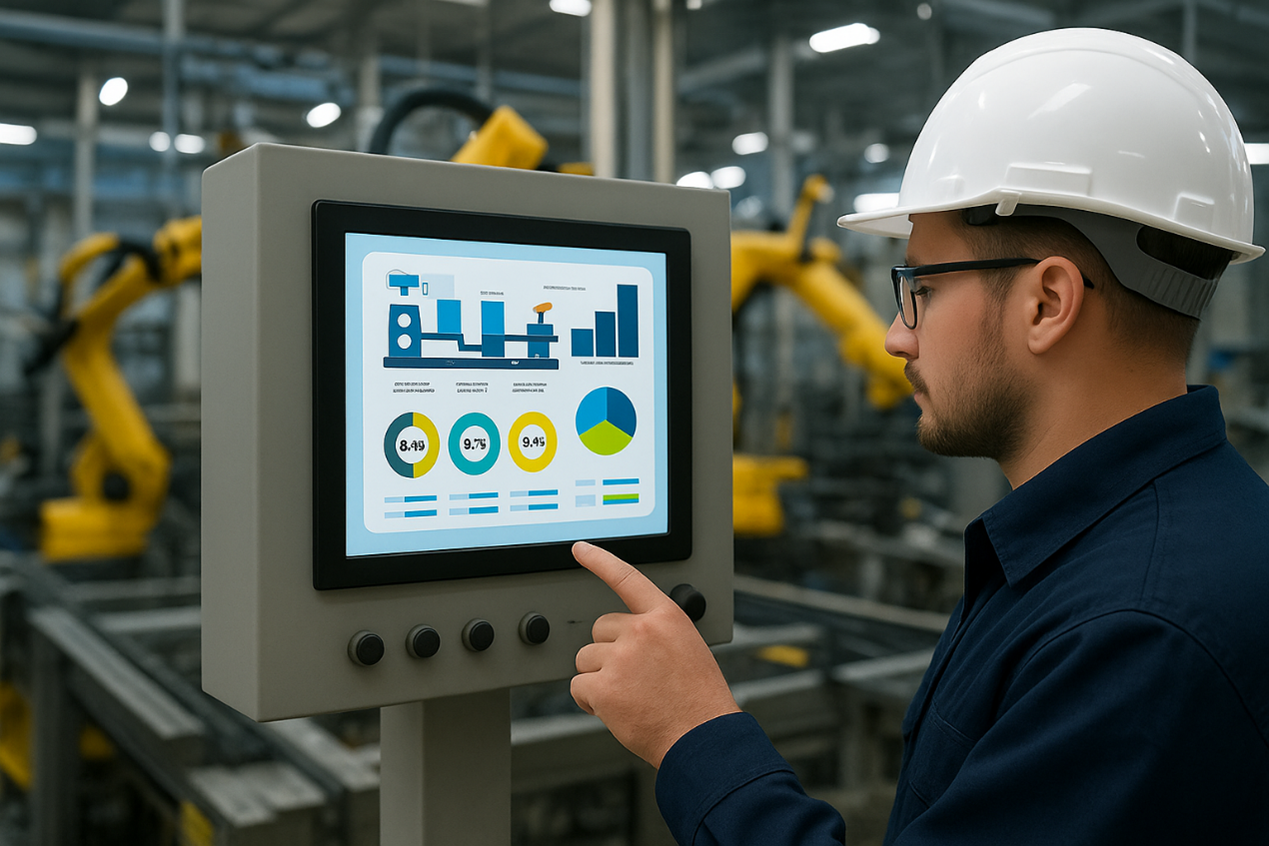
In modern industrial automation, the LCD display has become far more than a simple output screen. It serves as the primary human–machine interface (HMI) — a bridge between operators and complex control systems. As factories move toward digital transformation and Industry 4.0, LCD display technology continues to evolve to meet higher demands for reliability, visibility, and intelligence.
Industrial environments are often harsh — with exposure to dust, vibration, and temperature extremes. The next generation of industrial LCD displays focuses on ruggedization, including reinforced glass, wide operating temperature ranges, and IP-rated enclosures. These improvements ensure that displays maintain stable performance in even the most challenging conditions.
With outdoor and semi-outdoor installations becoming more common, sunlight-readable LCDs are in high demand. Modern TFT display modules now feature 1,000 nits or higher brightness, anti-glare coatings, and wide viewing angles, ensuring operators can clearly read information in bright lighting environments — from factory floors to vehicle dashboards.
The line between displays and control interfaces is blurring. Capacitive and resistive touch screen HMIs are being integrated into control panels, allowing intuitive operation similar to smartphones. Combined with embedded processors and smart UI software, these new-generation LCDs support real-time monitoring, gesture control, and even remote diagnostics.
As sustainability becomes a global priority, energy-efficient LCD technologies are gaining traction. LED backlighting, adaptive brightness control, and low-power standby modes help reduce overall energy consumption. Manufacturers are also exploring recyclable materials and RoHS-compliant components to align with green manufacturing standards.
The future of industrial LCD displays lies in connectivity and intelligence. Displays will not only show information but also communicate with sensors, PLCs, and cloud platforms. Integrated wireless modules and IoT-ready interfaces will make displays part of a connected ecosystem, enabling predictive maintenance and data-driven optimization.
From ruggedized hardware to smart, connected systems, LCD displays are becoming the core of intelligent industrial automation. The next wave of innovation will bring even more advanced materials, AI-based visual interfaces, and seamless integration with Industry 4.0 infrastructures.
For businesses aiming to stay ahead, investing in the latest industrial-grade LCD technology means not only improved efficiency but also long-term operational resilience.
The 8 inch displays might be affected and delay for an accident.
New iPhone 13 Series will use On-Cell OLED Displays. And it that will be launched in the second half of this year will be exclusively supplied by Samsung Display (SDC)
This is the project management of how sinocrystal handle your customized project relate to displays.
Discover how LCD displays are evolving in industrial automation — from high-brightness and rugged designs to smart connectivity and energy efficiency. Explore what’s next for industrial-grade visual interfaces.
Discover the key factors to consider when choosing an LCD display for your project, including size, resolution, interface, brightness, and customization options from a factory-direct manufacturer.
Discover the latest innovations in rugged LCD displays for harsh environments — from extreme temperature resistance to sunlight readability and waterproof designs. Factory-direct manufacturing with full customization.
A complete guide to LCD display connection methods, including SPI, I2C, RGB, MIPI, LVDS interfaces and physical mounting options. Learn how to connect monochrome and TFT LCDs to your development board or product housing.